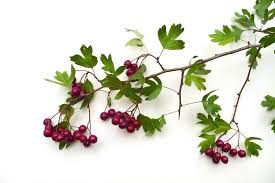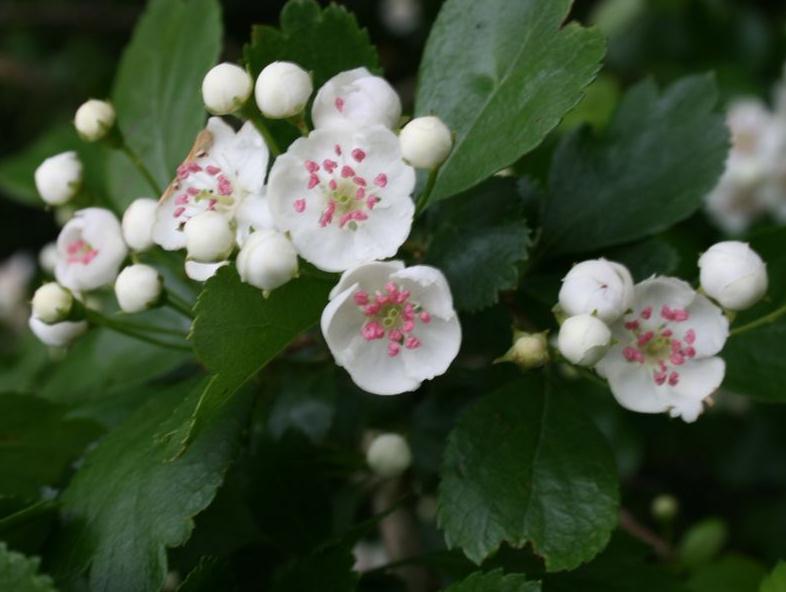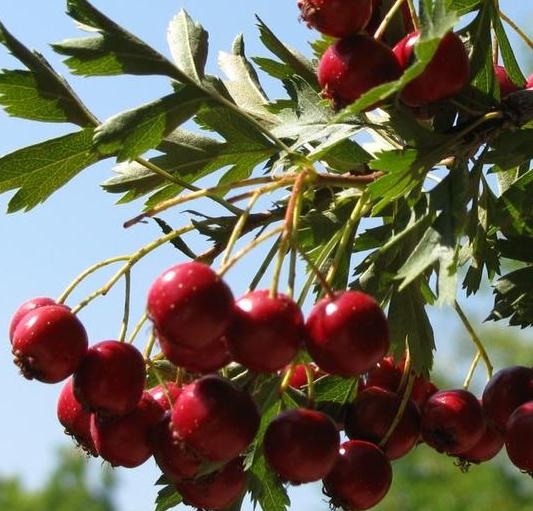- Plant-Based Protein
- Natural Plant Flavours
- Food and Dietary Supplement Ingredients
- Fruit Juice Powder
- Animal Nutrition Ingredients
- Water Soluble Ingredients
- Cosmetic Ingredients
- Unveiling the Therapeutic Potential of Rabdosia Rubescens: A Comprehensive Review
- What are the medicinal properties of Rabdosia Rubescens?
- Nutritional value of Orange Juice Powder compared to fresh orange juice.
- Processing Conditions and Nutritional Value of Orange Juice Powder
- Exploring the Versatility of Herbal Extracts in Food Flavors

What are the health benefits of hawthorn leaf?
Welcome to our blog! Today, we are diving into the world of hawthorn leaf and uncovering its incredible health benefits. Whether you're a fan of herbal remedies or simply curious about natural alternatives, hawthorn leaf is definitely worth exploring.


Hawthorn Leaf Extract and benefits,side effect, uses,interactions,dosage
Hawthorn extract is an herbal preventive and therapeutic agent for cardiac insufficiency. It improves the efficiency of the heart by increasing blood supply to the heart muscle so the heart is able to pump more blood to the body. Hawthorn lowers the resistance to blood flow in peripheral vessels. Hawthorn can be used alone or in conjunction with other conventional or botanical drugs for a wide variety of mild cardiac disturbances, including palpitations from various origins such as hyperthyroidism and menopause, tachycardia, angina, cardiomyopathy, and cardiac insufficiency. Hawthorn has been documented as being used for heart conditions since the first century. Today, the leaf and flower have both been used for congestive heart failure and coronary artery disease. It is sometimes used for hypertension and cardiac arrhythmia. It has also been used for digestive and kidney issues. Flowers and berries are astringent, and are useful for sore throats. Significant scientific evidence confirms Hawthorn's traditional use. It has been the subject of hundreds of research studies, including nine double-blind, placebo-controlled human clinical trials. The results of this research show that Hawthorn strengthens the heart muscle, increases exercise tolerance, and supports a normal heart rhythm. While Hawthorn leaf contains high levels of flavonoids, the berry is rich in oligomeric procyanidins. The current thinking is that Hawthorn's biological activity is not due to one group of constituents, but the interaction of various compounds. Experimental and human research indicates these compounds work together to reinforce the heart's pumping capacity, support coronary blood flow, and provide antioxidant protection to the heart.

What you may get from us: If you're developing a product that contains plant active ingredients from Hawthorn Leaf Extract.I think you can find the information or products you need here.
Simple production process in our factory: After the plant is collected, raw material will be processed by solvent extraction, separation and purification, filtration, concentration, drying and other steps to form the final products. We may also design a prouction process based on your special requirements.
Through the physical and chemical processes, those compunds you don't want was removed, and the compunds preferred was accumulated. Which make the products achieve the best effects.
How to use Hawthorn Leaf extract powder:What you need is just use our products to formulate your products. It can be mixed with your other ingredients directly to make premix products. It can also be directly used for filling capsules or making tablets. Easy to say, our products are ready for Formula products.
|
Hawthorn Leaf Extract (2%vitexin-2"-O-rhamnoside) |
||
|
Appearance |
powder |
|
|
Color |
Brown |
|
|
Partical size |
Normally pass through 80mesh |
|
|
Other parameter |
We also control other parameters like: moisture, Microbiological limits, Heavy metals. |
|
|
Pack size |
25 kg per paper drum |
|
|
Purity of active compunds |
2% vitexin-2"-O-rhamnoside |
By HPLC |
|
For pricing or more information, please call 86 29 88444632 or send an email to Sales@nutraherbsource.com.
|
||
General Information
Scientific
Name(s): Cratagus
pinnatifida Bge. Or Cratagus monogyna
Common
Name(s): Mayblossom,
hedgethorn, maybush, mayflower, whitethorn, majuelo (Spanish), aubépine
(French), Hagedorn (German), snæþyrnir (Icelandic), almindelig hvidtjørn
(Danish)

Plant Description
Hawthorns are decidious plants with simple leaves that are usually toothed or lobed. The white or pink flowers, usually in clusters, are followed by small applelike pomes that range from red to orange to blue or black. The fruits vary in flavour and texture but are edible and sometimes used in herbal medicine. Some species are characterized by horizontal branching, a growth habit considered to enhance their ornamental value. Species readily hybridize with each other, making their taxonomy somewhat contentious.
Constituents of Hawthorn Leaf
Flavonoids (0.5-1.5%) and the oligomeric procyanidins (OPC's, 2.2-3.3%) are regarded as active constituents of hawthorn. The primary flavonoid in the leaves is vitexin-2"-O-rhamnoside or occasionally acetylvitexin-2"-O-rhamnoside; in the flowers it is hyperoside. The flavonoids are composed of flavanol aglycones and flavanol O-glycosides (quercetin, kaempferol, hyperoside, isoquercitroside, spirein, rutin among others), flavone-Oglycosides (luteolin-7-O-glucoside), flavone-C-glycosides (vitexin, isovitexin, orientin and isoorientin), flavone-C-O-glycosides (vitexin-2"-O-rhamnoside and acetylvitexin-2"-O-rhamnoside among others) and flavone-di-C-glycosides. The procyanidin fraction is composed of 2 to 8 (+)-catechin and (-)-epicatechin units. The dimeric procyanidin B-2 and the trimeric procyanidin C-1 are the main constituents. Some procyanidin tetramers are present.
Aromatic carbonic acids, mainly chlorogenic acid and caffeic acid, pentacyclic triterpenoid acids such as oleanolic acid, ursolic acid, crataegolic acid as well as nitrogen-containing compounds such as choline and acetylcholine were cited in older literature as components of the drug.
Health Benefits of Hawthorn extract
Heart Benefits
Scientists think hawthorn benefits the heart by causing a dilation of the smooth muscle that lines the coronary arteries, thereby increasing blood flow to the heart. Hawthorn is also thought to increase heart muscle contraction, heart rate, nerve transmission, and heart muscle irritability.
Chronic Heart Failure
Many, but not all, studies suggest a benefit for hawthorn for this use. According to a 2008 review of 14 studies that included a total of 855 chronic heart failure patients, hawthorn may help manage symptoms and improve physiologic outcomes when used as a supporting treatment for chronic heart failure. The review's findings indicate that treatment with hawthorn may lead to improvement in exercise tolerance and in symptoms, such as fatigue and shortness of breath. The researchers concluded that "there is a significant benefit in symptom control and physiologic outcomes from hawthorn extract as an adjunctive treatment for chronic heart failure."
However, one long-term study completed in 2009 did not confirm these benefits. In this study, 120 patients with heart failure were randomized to receive 450 milligrams of hawthorn twice a day or a placebo for six months. Hawthorn provided no symptomatic or functional benefit when given with standard medical therapy.
High Blood Pressure
Studies with hawthorn are conflicting for its effectiveness in reducing high blood pressure. In a pilot study published in 2002, 38 mildly hypertensive volunteers were assigned to a daily supplement of 600 milligrams of magnesium, 500 milligrams of hawthorn extract, a combination of magnesium and hawthorn, or a placebo. After 10 weeks, the 19 subjects who took hawthorn extract showed a greater reduction in resting diastolic blood pressure than other study members. What's more, hawthorn-taking participants were found to have lower levels of anxiety.
In a study published in 2006, scientists discovered that taking 1,200 milligrams a day of hawthorn extract helped lower blood pressure among individuals taking prescription drugs to treat their type 2 diabetes.
Hawthorn as a Remedy for Angina
Hawthorn can be used to treat or prevent angina pectoris (angina). Angina is defined as a chest pain or discomfort that occurs when the heart muscle receives not enough blood and the oxygen supply decreases.
A study conducted in 1983 showed the applicability of hawthorn extract to treat patients who often suffered from angina. 60 patients were given either 180 mg extract or placebo daily for three weeks.
The patients who took hawthorn could train for longer periods without suffering from angina attacks. ECGs showed better blood flow and oxygen supply to the heart in these patients than in those receiving a placebo.
Drug/Herb interactions
Many different theoretical interactions between Crataegus and orthodox medications have been postulated. None have been substantiated. An interaction study between digoxin and Crataegus preparation WS1442 concluded that both of these remedies may be co-administered safely. Three randomized clinical trials and one observational study reviewed by Daniele et al. involved concomitant use of cardioactive glycoside medications.None of these studies raised any issues regarding herb/drug interactions. Vasodilatory effects of hawthorn have been cited as theoretically causing complications when used with other vasodilatory agents (i.e., caffeine, theophylline). No reports of adverse effects relating to this issue have been cited to date. Inotropic actions of hawthorn have been cited as potentially affecting the hypotensive effects of beta blockers. This also remains unsubstantiated. The proposed theoretical herb/drug interaction between Crataegus preparations and orthodox medications remains theoretical, possibly due to the complex effects of whole plant medicines upon the system.
Precautions:
Hawthorn Leaf extract is considered generally safe, with no known side effects.
Dosage
The recommended dosage is usually 160 to 900 mg in two or three divided daily doses. Hawthorn extracts are normally standardized to contain either 2.2% of flavonoids.
For commercial products containing hawthorn, the manufacturer’s instruction should be followed.
It usually takes one to two months before achieving maximum benefits of the herb.
- No Prev
- No Next








